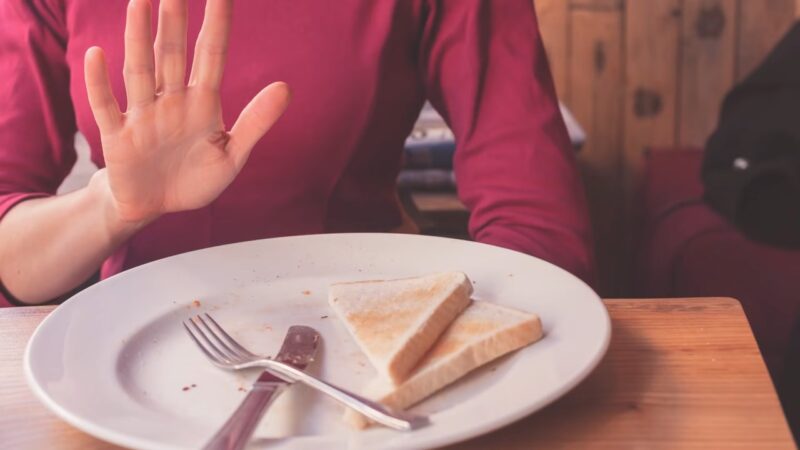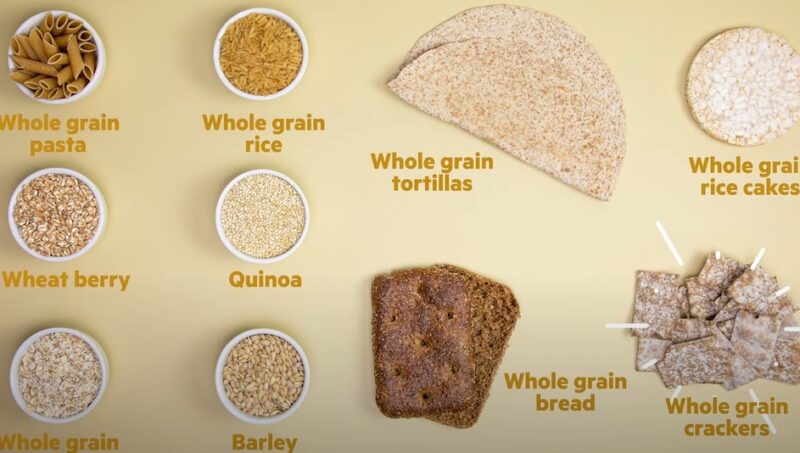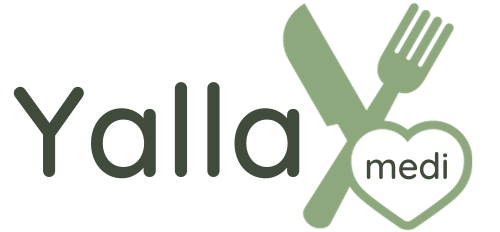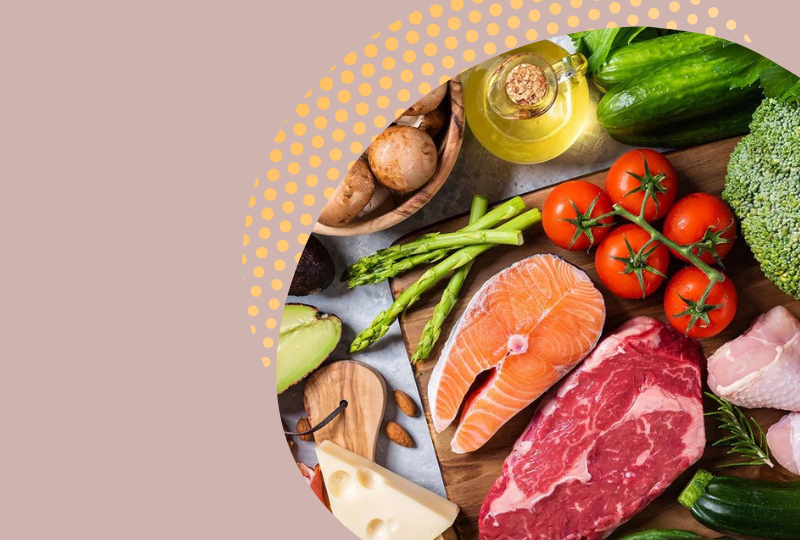Most conventional diets include grains as a mainstay, however an increasing number of people are skipping this dietary category.
Some people choose a grain-free diet in an effort to lose weight or improve their health, while others do so due to allergies or food intolerances.
It is said that this type of eating has a number of health advantages, including better digestion, lowered inflammation, and lower blood sugar levels. It could, however, have disadvantages and not be appropriate for everyone.
This article examines the advantages and potential downsides of a grain-free diet critically.
What Is Grain Free Diet?

A grain-free diet eliminates all grains, as well as foods that come from them.
This includes gluten-containing grains such as:
- wheat
- spelt
- barley
- rye
- triticale
It also include ones that do not contain gluten (non-glutenous), such as:
- dried corn
- millet
- rice
- sorghum
- oats
Furthermore, dried corn is regarded as a grain rather than fresh corn, which is a starchy vegetable. Foods prepared with corn flour are therefore likewise to be avoided.
Additionally, some people might decide not to consume components made from grains, like high fructose corn syrup or rice syrup. This isn’t a strict prerequisite for such a diet, though.
[su_note note_color=”#93e6b7″]
A grain-free diet eliminates all grains, including wheat, spelt, barley, rye, dried corn, millet, rice, and oats, as well as foods — and sometimes even ingredients — that are made from them.
[/su_note]
How To Follow Grain Free Diet?
To follow a grain-free diet, you need to avoid eating all grains, as well as grain-derived foods. This includes:
- bread
- pasta
- muesli
- oatmeal
- rice cakes
- breakfast cereals
- pastries
- cookies
Despite this, the majority of grain-free diets allow very modest amounts of pseudocereals such quinoa, amaranth, and buckwheat. Although pseudocereals can be prepared and consumed in the same ways as grains, they are not officially grains.
Naturally low in carbohydrates, a grain-free diet can be, but it’s not necessary. Fruits, legumes, and starchy vegetables like potatoes, squash, and fresh corn are all excellent sources of carbohydrates for people who want to increase their intake.
There are no limitations on foods made without grains.
Thus, you can consume as much meat, fish, eggs, nuts, seeds, sweets, fats, or dairy as you choose. However, advocates of grain-free diets usually advise against consuming too many highly processed foods.
[su_note note_color=”#93e6b7″]
Grain-free diets exclude all grains and grain-derived products but allow for small amounts of pseudocereals. They can include as much fruit, vegetables, meat, eggs, dairy, legumes, nuts, seeds, sugar, and fat as you wish.
[/su_note]
Benefits

A grain-free diet is a dietary approach that excludes grains such as wheat, rice, oats, and corn from the diet. Here are some potential benefits of following a grain-free diet:
- Improved digestive health: Some people may have difficulty digesting grains due to the presence of certain proteins and carbohydrates. A grain-free diet may reduce digestive discomfort, bloating, and gas.
- Reduced inflammation: Grains contain pro-inflammatory compounds such as lectins and phytates, which can cause inflammation in some people. A grain-free diet may reduce inflammation in the body, which is associated with various chronic health conditions.
- Better blood sugar control: Grains are high in carbohydrates, which can cause blood sugar levels to spike and then crash, leading to cravings and hunger. A grain-free diet may help stabilize blood sugar levels, which can improve energy levels and reduce cravings.
- Weight loss: A grain-free diet may lead to weight loss due to reduced calorie intake and improved insulin sensitivity.
- Allergy relief: Some people are allergic or intolerant to grains, and eliminating them from the diet can help alleviate symptoms such as skin rashes, eczema, and respiratory problems.
It is important to note that a grain-free diet can be challenging to follow, as grains are a common staple in many diets. It is important to ensure that the diet is well-balanced and includes a variety of nutrient-dense foods. If you are considering a grain-free diet, it is best to consult with a healthcare professional or registered dietitian to ensure that you are meeting your nutritional needs.
[su_note note_color=”#93e6b7″]
A grain-free diet may reduce inflammation, aid weight loss, and improve digestion and blood sugar levels. It may also promote mental health and alleviate pain in people with fibromyalgia or endometriosis, though more research is needed.
[/su_note]
Downsides

While there are potential benefits to a grain-free diet, there are also some potential downsides to consider:
- Nutrient deficiencies: Grains are a source of several important nutrients, such as fiber, B vitamins, and minerals like iron and magnesium. Eliminating grains from the diet can increase the risk of nutrient deficiencies, especially if the diet is not well-planned.
- Limited food choices: Eliminating grains can significantly limit food choices, which may make it difficult to follow the diet in the long term. It may also be challenging to eat out or find suitable options when traveling.
- Cost: A grain-free diet may be more expensive, as it often involves purchasing specialty products and may require more time and effort for meal planning and preparation.
- Social isolation: Following a grain-free diet can make social situations, such as eating out with friends or attending events, more challenging and isolating.
- Increased fat intake: Many grain-free products are high in fat, which can lead to an increased intake of saturated and trans fats if not carefully balanced with other nutrient-dense foods.
It is important to consider both the potential benefits and downsides of a grain-free diet and to make an informed decision based on individual needs and preferences. Consultation with a healthcare professional or registered dietitian is recommended before making any significant dietary changes.
Top 8 Tips to Ease Into a Grain-Free Lifestyle
1.Roast or grill meats on the weekend to store in the refrigerator all week. You can shred or chop grilled chicken, hamburger, and other roasted meats and add them to a salad or pack them in a lunchbox. It’s a fantastic way to quickly consume some protein.
2.Use healthy wraps like greens. My preferred lettuce to use as a wrap is iceberg. It is substantial, crispy, and works well as a substitute for tortillas or bread.
3.Produce excess. Every week, I make two batches of dishes including casseroles, waffles, soups, and muffins. Keeping certain nutrient-dense meals on hand all the time helps us resist the urge to eat out.
3.Fill your kitchen with lots of vegetables. When you don’t eat grains, you’ll eat a lot more vegetables – which is a great thing! Stock your fridge and pantry with your favorites.
4.Make use of the slow cooker. Your new best friend in the crock cooker will be chicken or roast. Every week I make one of these recipes. Dinner is ready when you serve it with a salad! Salads or soups taste fantastic with the leftovers. In addition, I adore making beans and casseroles for breakfast in the crock pot.
5.Consume leftovers. You’ll have leftovers at least a couple times every week if you adhere to #3. Four insulated Thermoses that I bought a few years ago have been of great use to our entire family. In the morning, we reheat leftovers before I send them off to school and work with my children and spouse.
6.Always have baking supplies on hand. One of the reasons I enjoy baking without grains is that you only need to keep a small number of ingredients on hand for last-minute baking. The ingredients I always have on hand are listed below:
- almond meal
- coconut meal
- powdered arrowroot
- invert sugar
- fresh honey
- maple sugar
- grass-fed
- unflavored gelatin
7. Include a serving of saturated fat in each meal. I can’t emphasize this enough. Real, natural saturated fats aid in the reduction of inflammation, satiation to prevent overeating, and the body’s absorption of nutrients. Here is a fantastic resource for information on saturated fats’ health benefits. For cooking and baking, I have coconut oil, unsalted butter, palm shortening, organic lard, and ghee in my pantry and refrigerator.
8. Shop Wisely. I’m overjoyed to have just learned about Thrive Market! Think of Thrive Market as the online equivalent of Whole Foods and Costco, offering real food at wholesale costs and delivering it to your home. You can conduct a search based on your dietary limitations, such as raw, gluten-free, or paleo.
FAQ
Is a grain-free diet suitable for everyone?
A grain-free diet is not suitable for everyone, particularly if you do not have any underlying medical conditions or allergies. While there are potential health benefits, it is important to consult with a healthcare professional or registered dietitian before making significant dietary changes. Additionally, it may not be appropriate for children, pregnant or breastfeeding women, or those with certain medical conditions.
Can it help with weight loss?
A grain-free diet may aid in weight loss due to reduced calorie intake and improved insulin sensitivity. However, it is important to note that weight loss is not guaranteed, and the diet must be well-planned to ensure adequate nutrient intake.
What are some nutrient-dense foods to include in a grain-free diet?
Nutrient-dense foods that can be included in a grain-free diet include:
- Vegetables: leafy greens, cruciferous vegetables, root vegetables, and nightshades
- Fruits: berries, citrus fruits, stone fruits, and tropical fruits
- Protein: meat, fish, poultry, eggs, and plant-based sources such as legumes, nuts, and seeds
- Healthy fats: avocado, olive oil, coconut oil, nuts, and seeds
- Dairy (if tolerated): grass-fed butter, ghee, cheese, and yogurt
How can I ensure that I am getting enough fiber?
Fiber is essential for digestive health and can be obtained from non-grain sources such as vegetables, fruits, nuts, seeds, and legumes. It is recommended to consume a variety of these fiber-rich foods to meet daily fiber needs.
What are some common grain-free substitutes for traditional grain-based foods?
There are several grain-free substitutes for traditional grain-based foods, such as:
- Cauliflower rice or zucchini noodles in place of rice or pasta
- Almond or coconut flour in place of wheat flour
- Lettuce or collard greens as wraps instead of tortillas or bread
- Sweet potato or butternut squash fries in place of regular fries
Are there any potential health risks associated with a grain-free diet?
A grain-free diet can increase the risk of nutrient deficiencies, especially if the diet is not well-planned. It may also lead to increased fat intake if not carefully balanced with other nutrient-dense foods. Additionally, it can be challenging to follow in the long term and may lead to social isolation in some situations. It is important to consult with a healthcare professional or registered dietitian before making significant dietary changes.
Can it improve autoimmune conditions?
Some people with autoimmune conditions may benefit from a grain-free diet due to its potential anti-inflammatory effects. Grains contain pro-inflammatory compounds like lectins and phytates, which may exacerbate inflammation in people with autoimmune conditions. However, it is important to consult with a healthcare professional or registered dietitian before making significant dietary changes.
Is a grain-free diet low in carbohydrates?
A grain-free diet can be low in carbohydrates, but it is not necessarily low-carbohydrate. While grains are a significant source of carbohydrates in many diets, there are still plenty of carbohydrate-rich foods that can be included in a grain-free diet, such as fruits, vegetables, and legumes. It is important to ensure that the diet is well-planned and balanced to meet individual nutrient needs.
Can it lead to constipation?
A grain-free diet may lead to constipation if not enough fiber-rich foods are included. Grains are a significant source of dietary fiber, so eliminating them from the diet may decrease fiber intake. It is important to include plenty of non-grain sources of fiber, such as fruits, vegetables, nuts, seeds, and legumes, to support digestive health. Drinking plenty of water and engaging in regular physical activity can also help prevent constipation.
Conclusion
In conclusion, a grain-free diet can offer some potential health benefits, such as improved digestion, reduced inflammation, and better blood sugar control. It may also provide relief for people with grain allergies or intolerances.
However, it is important to consider both the potential benefits and downsides before making significant dietary changes. A well-planned and balanced grain-free diet can be a healthy approach to eating, but it may not be appropriate for everyone.
Consulting with a healthcare professional or registered dietitian can provide personalized guidance and support for those interested in a grain-free diet. Ultimately, the decision to adopt a grain-free diet should be based on individual needs and preferences, and it should be approached with care and attention to nutrient intake.

